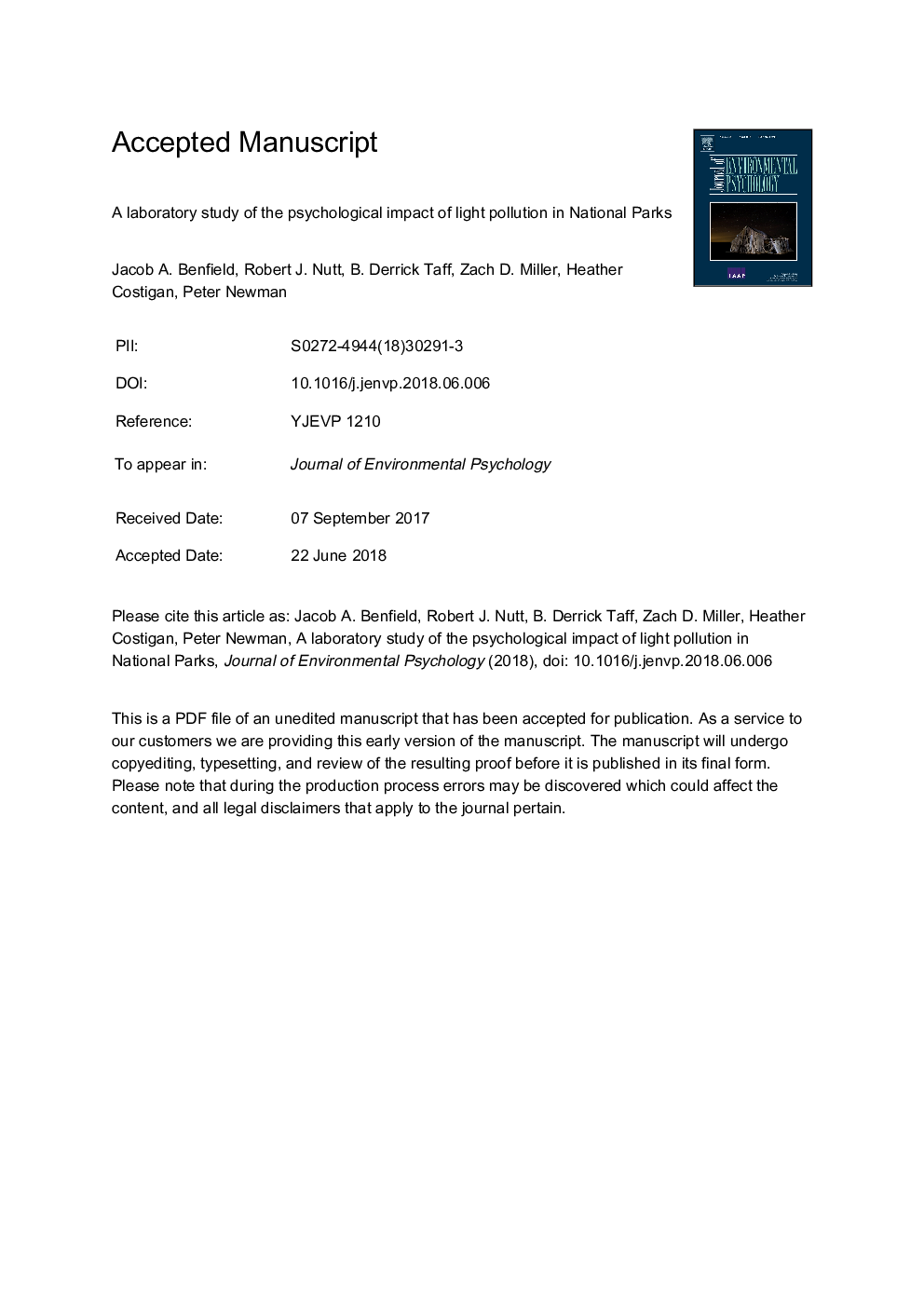| Article ID | Journal | Published Year | Pages | File Type |
|---|---|---|---|---|
| 7245160 | Journal of Environmental Psychology | 2018 | 24 Pages |
Abstract
Light pollution is ubiquitous in much of the developed and developing world, including rural and wilderness areas. Other sources of pollution, such as noise or motorized vehicle emissions, are known to impact the perceived quality of natural settings as well as the psychological well-being and satisfaction of visitors to those locations, but the effects of light pollution on visitors to natural settings is largely unstudied. Using experimental manipulations of light pollution levels in virtual reality simulations of three U.S. National Parks, the current study aimed to provide initial evidence of an effect on visitors. Results show that light pollution impacts a range of psychological and scene evaluation dimensions but that pristine night skies are not necessarily viewed as the ideal, likely due to being viewed as unfamiliar or unrealistic because so few have experienced the true baseline.
Related Topics
Social Sciences and Humanities
Psychology
Applied Psychology
Authors
Jacob A. Benfield, Robert J. Nutt, B. Derrick Taff, Zachary D. Miller, Heather Costigan, Peter Newman,
